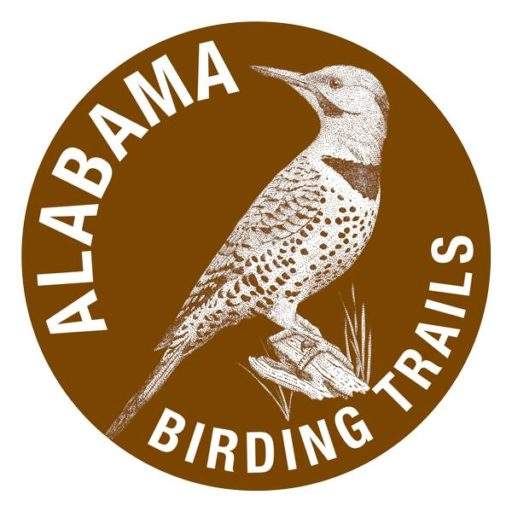West Alabama | Bibb | Best Seasons: Fall | Spring
The Kathy Stiles Freeland Bibb County Glades Preserve gained fame for the large numbers of rare and interesting wildflowers and shrubs found here, on rocky, dolomite glades on the banks of the Little Cahaba River, which snakes through the 480-acre property owned by the Nature Conservancy. The land is forested, often sparsely, by Longleaf pine ridges and oak-hickory forested bluffs, but there is considerable open space dotted by rocky outcrops.
There is tremendous diversity of habitats here which results in a great variety of birds. You can find Pine Warblers, Brown-headed Nuthatches and a few Bachman’s Sparrows in the pinewoods. Red-eyed and Yellow-throated Vireos, Hooded, Black-and-white, and Kentucky Warblers, Yellow-billed Cuckoos, Eastern Wood-Pewees, Wood Thrushes and Summer and a few Scarlet tanagers appear in the hardwood and mixed forest. Louisiana Waterthrushes, American Redstarts, Northern Parulas, and Yellow-throated Warblers may be also found. Acadian Flycatchers and various wading birds are numerous on the banks of the Little Cahaba, with Common Yellowthroats, Field Sparrows, and Carolina Wrens in the second-growth tangles. Eastern Kingbirds, Prairie Warblers, Yellow-breasted Chats ply the edges of the open glades. According to the Nature Conservancy, the site is currently the most biologically diverse piece of land known in the state of Alabama.
There are habitat generalists, such as Blue-gray Gnatcatchers, Great Crested Flycatchers, and Orchard Orioles throughout the preserve, and all of Alabama’s woodpeckers, other than the Red-cockaded, are present in the appropriate season. Red-tailed Hawks and Great Horned Owls hunt the open areas, and Red-shouldered Hawks reside near the river. You may see Broad-winged Hawks above the upland areas in the warmer months, and Cooper’s Hawks hunt from cover throughout the area. The glades are good for Chuck-will’s-widows at dawn and dusk, when Eastern Screech-Owls hunt from the edges of the denser woods.
The most productive times to visit are undoubtedly spring and fall when the greatest number and variety of birds are present. Birds are far less active on this site after mid-June. Summer heat and humidity can be oppressive, so visitors should bring potable water and sunscreen and plan to botanize more than bird for visits in July and August. After the fall migratory wave has passed, winter birding can be productive here. Feeding flocks roam freely across the preserve, and highlights are Palm Warblers, Blue-headed Vireos, and wintering Blue-gray Gnatcatchers and Common Yellowthroats. Look for Winter Wrens near fallen timber and near the Little Cahaba.
The Bibb Glades are navigated by a wide and well-maintained walking path. Hiking over the gently rolling terrain is characterized as moderate. There are no facilities and no staff present at the site, and the area is not heavily visited. If you need visitor services, the Brierfield Ironworks Historical State Park is only 10 minutes away, and that the park is a perfect complement to a visit to the Bibb County Glades Preserve.
Note: This is a very remote site. You will likely not have reliable cell phone coverage. The road to the parking area is an unmarked dirt road. There is a boat launch at this location, but only for canoes and kayaks.
GPS: 33.059000. -87.034300
The Nature Conservancy in Alabama
2100 1st Avenue North, Suite 500
Birmingham, AL 35203 Phone:
(205) 251-1155
From I-65 in Shelby County, take exit 231 and merge onto AL 25 S toward Calera. (Fuel, food, and lodging are available near the exit and, to a lesser degree, in downtown Calera.) Follow AL 25 for 15 miles, turning right (west) on Bibb County 65 (also known as Bulldog Bend Road). Cross the bridge over Bulldog Bend and in a further .8 mile, turn left (south) onto a dirt road. The dirt road ends at the entrance to the Glades.
Amenities Available: Boat Launch, Gravel or Dirt Trails
Nearby Sites
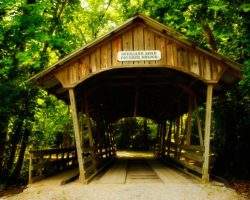
Brierfield Ironworks Historical State Park
Brierfield is an attractive, open, well-maintained park with restrooms, staff, a country store, picnic pavilions, rental cabins, and RV spaces. It features open, mature hardwood forest with good access points and sightlines. The park is an excellent …
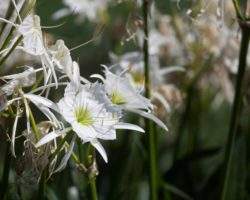
Cahaba River National Wildlife Refuge
Famed for the free-flowing Cahaba River and for the rare wildflowers found here, the Cahaba River NWR is an extraordinarily good birding destination. Expect abundant riparian songbirds – Louisiana Waterthrushes, Acadian Flycatchers, Northern Parulas, …
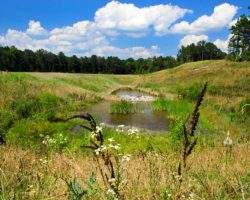
Living River
This site overlooks the Cahaba River and incorporates a small lake. The area is an excellent location for migrant songbirds, and an great selection of local breeding species. The property boasts an unusually high density of Louisiana Waterthrushes, A …
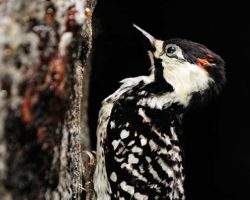
Red-cockaded Woodpecker Colony
The Oakmulgee Division of the Talladega National Forest contains the state’s largest population of Red-cockaded Woodpeckers. The birds nest and forage exclusively in stands of open, mature pines, where they are easiest to find early and late in the d …
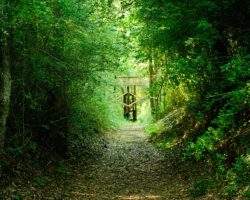
West Blocton Coke Ovens Park
Easily surveyed in a couple of hours, Coke Ovens Park is a worthwhile stop near the Cahaba National Wildlife Reserve, the Bibb Glades, and Living River. In addition to customary woodland canopy birds and open county species such as Eastern Kingbirds …
